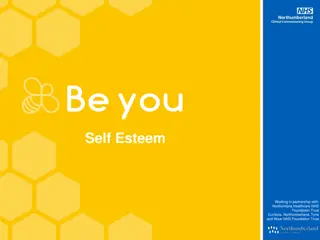Study on Self-Directed Learning - Student Perception and Material Evaluation in Slovenia
This Erasmus+ KA2 project studied the student perception and evaluation of improved teaching materials in Slovenia. 51 students from the Primary School of Livada participated in the project, with findings on the sufficiency, clarity, and ease of understanding of the materials provided. The results shed light on differences in learning preferences and effectiveness of the updated materials compared to previous ones.
Download Presentation

Please find below an Image/Link to download the presentation.
The content on the website is provided AS IS for your information and personal use only. It may not be sold, licensed, or shared on other websites without obtaining consent from the author.If you encounter any issues during the download, it is possible that the publisher has removed the file from their server.
You are allowed to download the files provided on this website for personal or commercial use, subject to the condition that they are used lawfully. All files are the property of their respective owners.
The content on the website is provided AS IS for your information and personal use only. It may not be sold, licensed, or shared on other websites without obtaining consent from the author.
E N D
Presentation Transcript
ERASMUS+KA2 PROJECT ON THE WAY TO SELF DIRECTED LEARNING NO. 2021-1-LV01-KA210-SCH-000031400 THE RESULTS OF THE APPROBATION OF THE IMPROVED TEACHING MATERIALS IN SLOVENIA , 8.2.2023
51 students from Primary School of Livada, Ljubljana, from grade 8 and 9, involved in the approbation
Indicate your dominant type of perception 19 students are audial types, 24 are visual types and 8 of them are kinestethic ones.
Were the learning materials enough to learn the topic? For 10 students learning materials were enough to learn the topic, for 19 students learning materials were somehow enough to learn the topic, for 13 students they were somehow not enough to learn the topic while for 9 students they were not enough to learn the topic.
Were the posted learning materials clearly understandable? For 13 students learning materials were clearly understandable, for 22 students learning materials were quite understandable, for 14 students they were less undertandable and for 2 students learning materials were not understandable.
Were these materials easier to understand than those previously available at the beginning of the school year? For 12 students new learning materials were easier to understand than the former ones, for 17 students new learning materials were a bit easier to understand than the former ones, for 10 students new learning materials were harder to understand than the former ones while for 12 students new learning materials were not easier to understand as the former ones.
Were instructions for tests understandable ? For 24 students instructions for tests were completely understandable, for 13 students instructions for tests were somehow understandable, for 10 students instructions for tests were less understandable, for 2 students instructions for tests were not understandable while 2 students didn t have any tests that week.
Were criteria for assesment of tests understandable ? For 30 students criteria for assessments of the tests were understandable, for 10 students criteria for assessments of the tests were more or less understandable , for 7 students criteria for assessments of the tests were less undertandable, for 3 students criteria for assessments of the tests were not understandable, while 1 student didn t have any tests that week.
Were tests corrected in time? For 31 students tests were corrected in time, for 10 students tests were corrected more or less in time, for 5 students tests were less corrected in time , for 5 students tests were not corrected in time at all , while 1 student didn t have any tests that week.
Did improved learning materials better motivate students? Improved learning materials better motivated 18 students, they more or less motivated 12 students, they less motivated 13 students while 8 students were not more motivated for learning by improved learning materials.
What kind of learning materials help you to understand the learning material best? Some students used multiple answers here. Learning materials to help students understand best are explanatory lectures of teachers for 18 students, video materials for 17 students, pictures/photos for 13 students, practical tasks for 7 students, teachers presentations for 6 students, charts for 2 students and music for 1 student.
Did long distance lessons and videos helped students in their learning? Long distance lessons and long distance videos definitely helped 19 students in their learning, they somehow helped 20 students in their learning while they less helped 6 students and didn t help 6 students in their learning at all.
Would you like to have more online lessons? 23 students would like to have more online lessons while 28 students still prefer face-to-face lessons.
Recommendations for teachers to improve their work in future Students recommendations for teachers to improve their work in future include using movies, pictures and Zoom more often as well as using more interactive and pre-recorded lessons . On the other hand students suggest teachers to give them less homework, less and easier tests and to better explain topics of subjects during lessons.
Thank you Robin Dewa, Dru tvo Bodi svetloba, Slovenia























